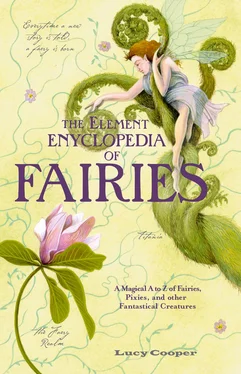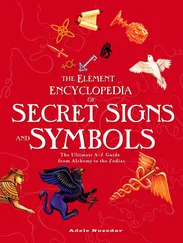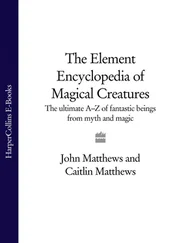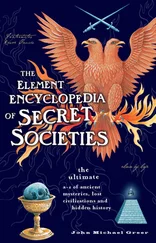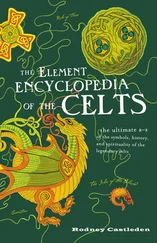
Variations on this theme include an Icelandic tale in which a woman constructs a spoon handle out of twigs that is so long it pokes out of the top of the chimney, and a Danish tale in which the mother makes black pudding using an entire pig. This prompts the changeling to remark, “A pudding with hide! And a pudding with hair! A pudding with eyes! And a pudding with bones in it! Thrice have I seen a young wood spring upon Tiis Lake, but never yet have I seen such a pudding! The Devil will stay no longer!” It runs away, never to return.
In other tales, it is an old fairy changeling’s desire for music, merriment, and dancing that gives it away. There are many Celtic tales in which a traveling tailor plays an integral role in unmasking the changeling. Typically, the father goes out to work and the mother goes out on an errand, leaving the tailor to watch the “baby” as he works. When the two of them are left alone, the tailor begins to whistle as he stitches, at which the creature in the cradle jumps up with a glint in its beady eyes and demands that the astonished tailor strikes up a tune on the fiddle or pipes so that it might dance. In some versions it is the changeling itself who takes up an instrument and plays a lively tune, sometimes insisting on a dram of whisky to accompany the revels. When the parents return, the little creature returns to the crib, where it resumes its crying and wailing. The tailor informs the parents of their child’s true identity and they drive out the changeling by building a blazing fire and placing it upon it so that it is sent up the chimney and the true human baby returned in its place.
Throwing the changeling on the fire isn’t always sufficient to bring back the human child, however. In a Scottish tale collected by J. F. Campbell, “The Smith and the Fairies,” a 14-year-old boy, the son of a smith, is taken by the fairies and a changeling left in his place.
A wise old man, a friend of the smith, set about brewing beer in eggshells. The changeling burst out laughing, exclaiming, “I have lived 800 years and I have never seen the like of that before!” The smith threw it on the fire and it flew through the roof, but the boy wasn’t immediately returned.
The wise man instructed the smith to visit the fairy hill on a full moon, when the entrance would be open.
Taking a Bible, a cross, a dirk (dagger), and a cockerel, the last of which he hid in his coat, the smith went to the fairy mound, where he heard the sound of pipes, dancing, and merriment. Sticking his dirk in the earth as he crossed the threshold, he ventured inside, to find the fairies enjoying their revels while his son was slaving away at a forge.
The fairies became very agitated with the smith for intruding on their festivities, but couldn’t approach him because he carried the Bible and cross. When he demanded they return his son, they shouted and made such a noise that the cockerel crowed.
The smith grabbed his boy and they left through the door wedged open by the dirk just as the fairy mound closed and all became dark once more.
At first the boy was silent and pale and wouldn’t go about his work, but a year and a day after his rescue he made a rapid recovery, took up his tools, and went on to prosper as one of the land’s finest smiths.
The metal dagger, Bible, cross, and cockerel in this tale are common examples of items used as protection against malicious fairies. The Bible and cross are allied with Christian beliefs that equate fairies with demons. The crowing of the cockerel is a sign that dawn is imminent and therefore that fairy revels must end, for fairies are believed to be afraid of the light. Metal, specifically iron, was widely used to ward off the unwanted attention of fairies. Metal objects were often placed in babies’ cradles as protection against the children being snatched by the fairies. An open pair of scissors or a pair of tongs was considered particularly effective. They had the added benefit of forming the shape of the cross—considered a protective symbol even before the advent of Christianity. An item of the father’s clothing such as a waistcoat or a pair of trousers served the same function. According to E. S. Hartland’s The Science of Fairy Tales (1891), a right shirt sleeve or a left stocking was particularly favored, though quite why this should be so is not clear.
In Sweden it was said that the fire must be kept burning in the room of a baby who had not yet been baptized—unbaptized children being particularly at risk from the incursions of fairies was a common theme across many cultures. As protection, a piece of steel such as a needle should be attached to the child’s swaddling—the preferred color of which was red, to simulate fire—and the water the child was washed in should not be thrown out. In China, the ash of dried banana skin was used to draw the sign of a cross on an infant’s forehead and a fisherman’s net placed over the cradle to guard against evil spirits. In Egypt, it was widely believed that a human child left unattended was at risk of being swapped with a djinn child.
Many tales across cultures stated that babies were particularly at risk of being taken by fairies during the first six weeks of life and were most vulnerable during the first three days. It was advocated that a fire be kept lit near the child at all times and that the parents keep constant watch. This had obvious practical benefits in safeguarding the child against accident, injury, and disease. Of course, in modern-day childcare it is still important to keep a baby warm and under the watchful gaze of its parents—not for fear of fairies, but to ward off illness and because infants cannot conserve heat for the first four weeks of life.
Accounts of changelings continued to be reported into the late nineteenth century. In 1895 in Ireland a woman named Bridget Cleary was killed by her husband, family, and neighbors, who claimed that she was a fairy changeling. The ordeals she was subjected to in order to cast out the fairy and return the “real” Bridget resulted in her death.
Though reports of this type are thankfully a thing of the past, changelings continue to capture the imagination and appear in many works of art and literature. A famous example is Shakespeare’s A Midsummer Night’s Dream , which revolves around a squabble between Oberonand Titania, King and Queen of the Fairies, over a changeling boy. W. B. Yeats’ poem “The Stolen Child” was inspired by Irish tales of children spirited away to fairyland. More recently, Maurice Sendak, children’s author and illustrator and creator of Where the Wild Things Are (1963), drew on changeling lore in his book Outside Over There (1981), in which Ida’s baby sister is taken by goblinsand replaced with a changeling made of ice. Ida must go the goblin realm and rescue her sister by playing her horn. Jim Henson’s film Labyrinth (1986), developed in conjunction with renowned fairy artist Brian Froud, acknowledges Sendak as an influence. Featuring David Bowie as Jareth the Goblin King, it tells the story of Sarah, who must rescue her baby brother from the domain of the goblin king.
Changeling stories deal with themes that continue to resonate, such as panic when a child goes missing, the fear that a child is sick or weak, or—from the point of view of the changeling—the feeling of not fitting in. Perhaps this is why changelings continue to be a source of inspiration for films, art, and literature today.
Читать дальше
